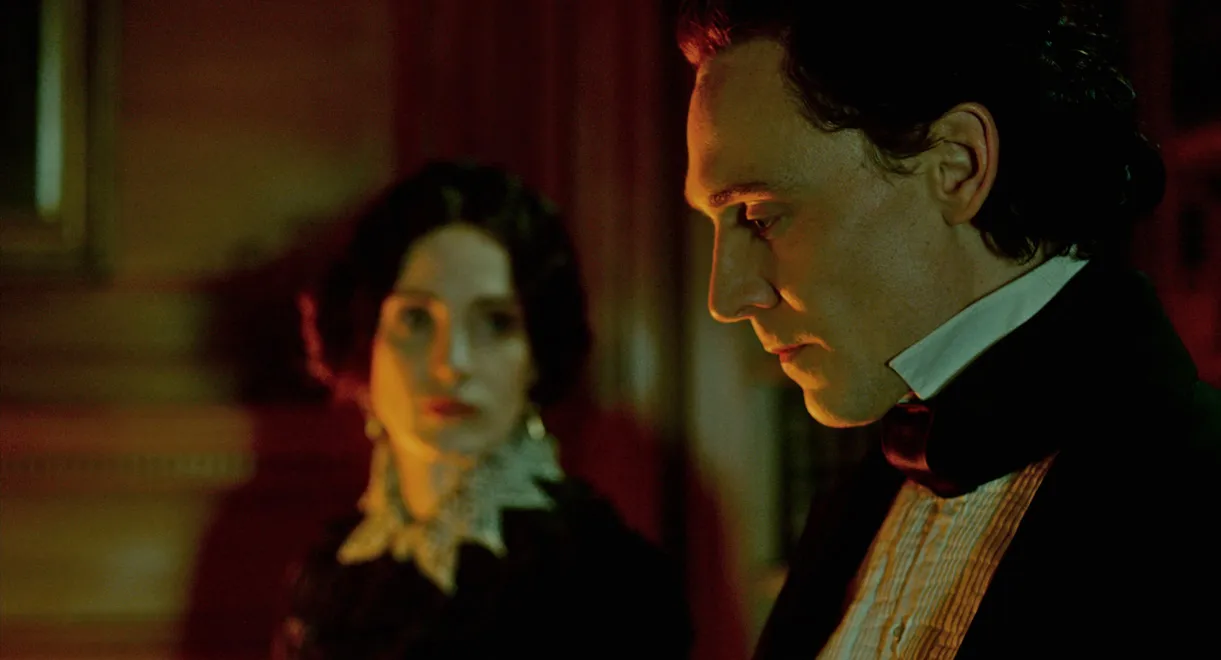“Crimson Peak,” the new gothic horror film from writer/director Guillermo Del Toro is good, but fails to live up to expectations. It has all of the elements of a perfect haunted house narrative: A remote mansion with bleeding walls, ominous owners and a protagonist in a blood-soaked nightgown. Unfortunately, this film largely stays on the surface of its chosen genre, making it predictable and ultimately not all that horrific.
In turn-of-the-century New York, American heiress and aspiring gothic novelist Edith Cushing (Mia Wasikowska) meets handsome, aristocratic Thomas Sharpe (Tom Hiddleston), accompanied by his sister, Lucille (Jessica Chastain). They have come to America in search of funds for Thomas’s inventions; a means to earn back the family fortune. Despite the warnings of her father and childhood friend (Charlie Hunnam), Edith is drawn to them like a moth to a flame. Following her father’s mysterious death, Edith quickly marries Thomas and is whisked off to his isolated manor, itself slowly sinking into the oozing, blood-red clay upon which it was built. As the Sharpes become stranger and stranger, Edith becomes increasingly certain that things aren’t right.
It almost goes without saying that this film is breathtakingly beautiful. When we leave the warm and comforting color palette of America behind and enter into the dark and coldly-lit Allerdale Hall, the house overtakes the film. A hole in the roof allows snow and harsh winter light to fill its rooms, and the clay seeping down the walls and up through the floorboards turns the house into a living, bleeding entity of its own.
Like Kubrick before him, Del Toro makes the unlit halls yawn before us, trying to engulf our protagonist in darkness. The juxtaposition of Edith — dressed in bright colors or white — to the bloodless Sharpes, dressed all in black, is always striking even in its simplicity. The image of Edith in a flowing nightgown carrying a candelabra typifies the gothic so well, and is all the more beautiful for it. Old school wipe and pinpoint transitions give the film an extra layer of flair. The set design, costumes (designed by Kate Hawley, all gorgeously ornate), and lighting have a visual flair that few other filmmakers could have achieved.
Which brings us to the film’s fatal flaw: the story. From the description above, you have probably gathered that this is very standard gothic fare. It’s pretty safe to assume that there will be a madwoman in the attic or the heads of former wives in the closet. The film introduces so many elements classic to this genre, but fails to transcend these tropes or make “Crimson Peak” a quintessential text.
People who have yearned for something better than the increasingly bad string of found footage that dominates mainstream horror can appreciate what del Toro is trying to achieve: He is aiming for the tension and atmosphere of a classic haunted house movie (“The Haunting,” “Rebecca,” “The Innocents”), but a true movie in this style requires the restraint to let the tension build. To draw the audience in, Del Toro front loads the time in the house with a gauntlet of “scary” CGI ghosts, but he shows his hand too soon, and these cheap scares kill the suspense.
I wanted “Crimson Peak” to be the ultimate combination of classic and modern horror, and I think that is what Guillermo Del Toro wanted, too. Del Toro thrives in the realms of dark fantasy and horror, of gorgeous production and tense atmosphere. When these elements align we get masterpieces like “Pan’s Labyrinth” and “The Devil’s Backbone.” When they don’t, we get “Crimson Peak.”
Contact Hannah Frakes at hfrakes ‘at’ stanford.edu.
